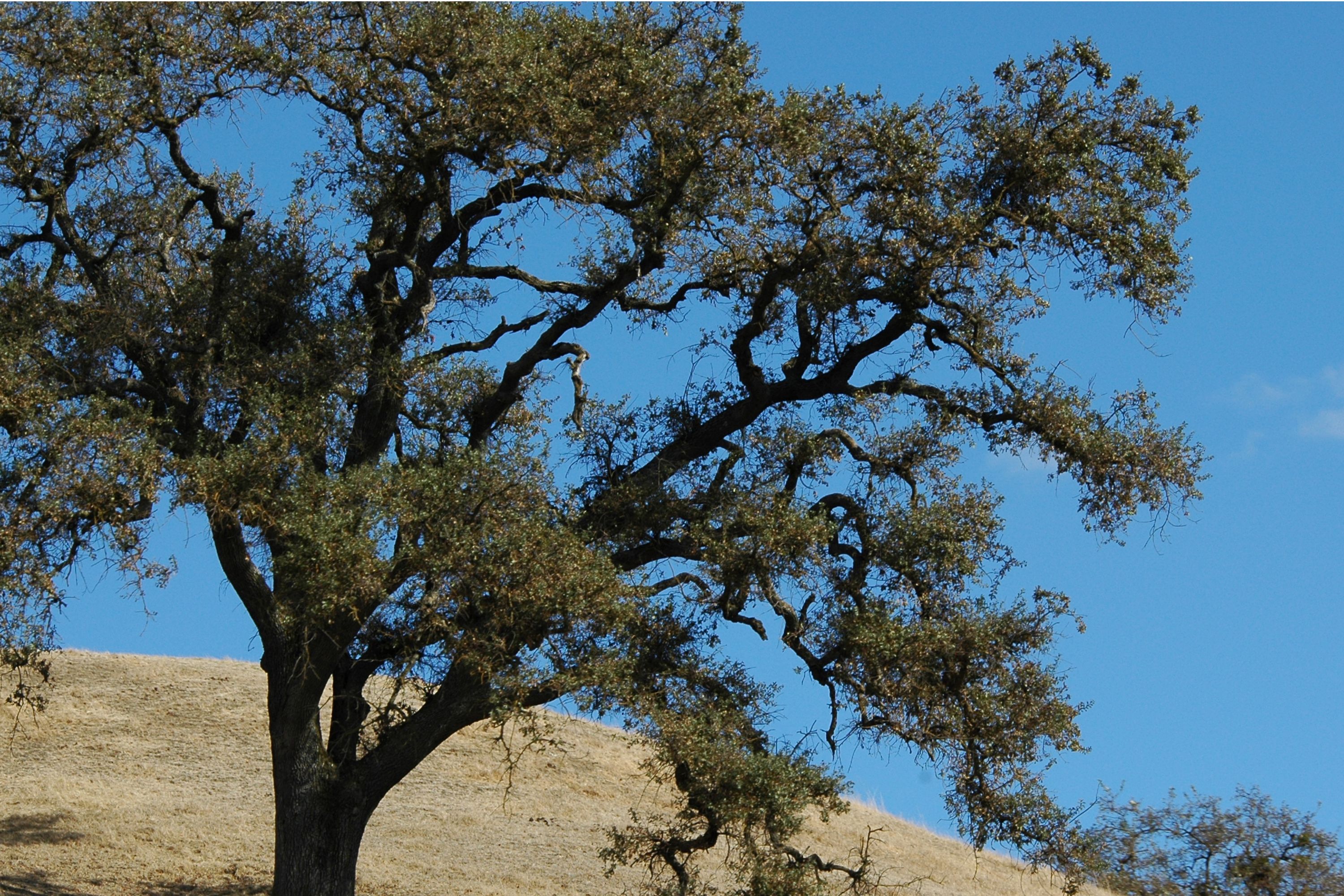Blue oak
(Quercus douglasii)

Description
Quercus douglasii, known as blue oak, is a species of oak endemic to (found only in) California, common in the Coast Ranges and the foothills of the Sierra Nevada. It is California's most drought-tolerant deciduous oak, and is a dominant species in the blue oak woodland ecosystem. It is occasionally known as mountain oak and iron oak. Quercus douglasii is a medium-sized tree with sparse foliage, generally 6–20 meters (20–66 feet) tall, with a trunk 36–60 centimeters (1–2 ft) in diameter at breast height. Trunks are typically solitary, but some trees have multiple trunks. The tallest recorded specimen was found in Alameda County, at 28.7 m (94 ft). The trees grow slowly, about 30 cm (12 in) per year. Individual trees over 500 years old have been recorded. The bark is light gray with many medium-sized dark cracks. The blue-green leaves are tough and leathery, deciduous, 4–10 cm (1+1⁄2–4 in) long, and entire or shallowly lobed. The acorns are 2–3 cm (3⁄4–1+1⁄4 in) long, with a moderately sweet kernel, and mature in 6–7 months from pollination. Q. douglasii is monoecious and wind-pollinated. Flower buds take a growing season to develop into catkins. Blue oak pollen is severely allergenic. The species is one of over 80 named after Scottish botanist David Douglas. The common name "blue oak" derives from the dark blue-green tint of its leaves. Taxonomically it is placed in the white oak group (subgenus Quercus, section Quercus). Q. douglasii prefers dry to moist soil and plenty of sunlight. Its sparse foliage allows more light to reach the ground, and young trees may grow for decades below their parents' canopies. The species often co-habitates with gray pine (Pinus sabiniana), and is also found with interior live oak (Q. wislizeni), coast live oak (Q. agrifolia), valley oak (Q. lobata), Oregon white oak (Q. garryana), and canyon live oak (Q. chrysolepis). Natural hybrids between Q. douglasii and the related Q. lobata, Q. garryana, and shrub live oak (Q. turbinella) often occur where the species grow together in the same area. Sources consider Quercus × alvordiana to be a hybrid of Q. douglasii and either Q. turbinella or Q. john-tuckeri. Old-growth blue oak woodland may be one of the most widespread old-growth forest ecosystems remaining in the state after European colonization.
Taxonomic tree:







